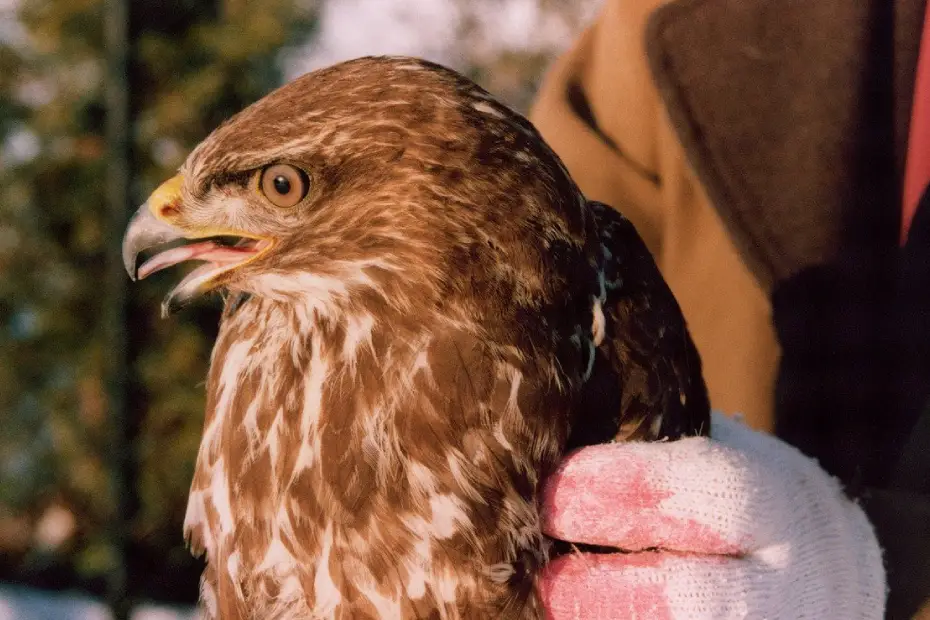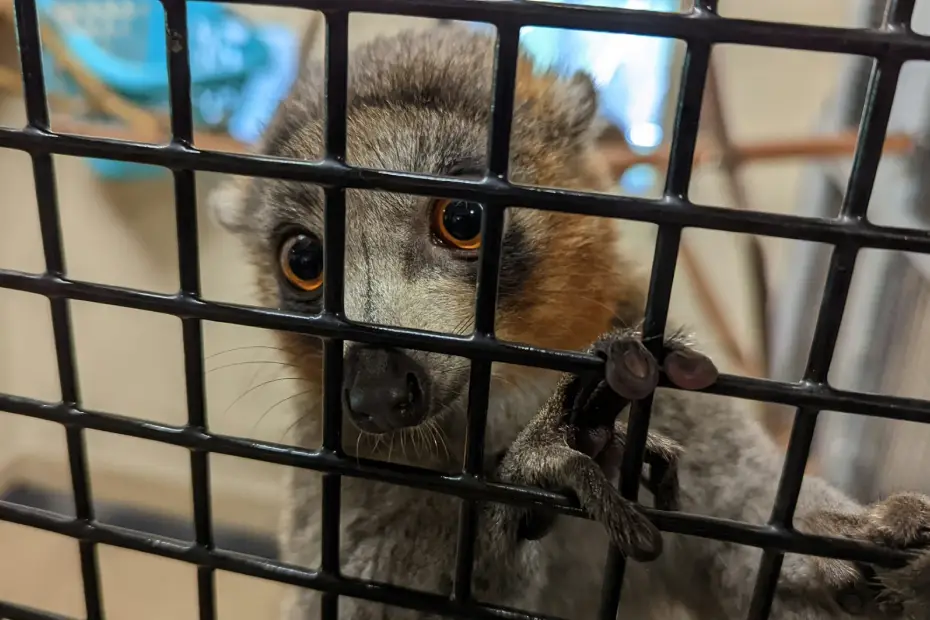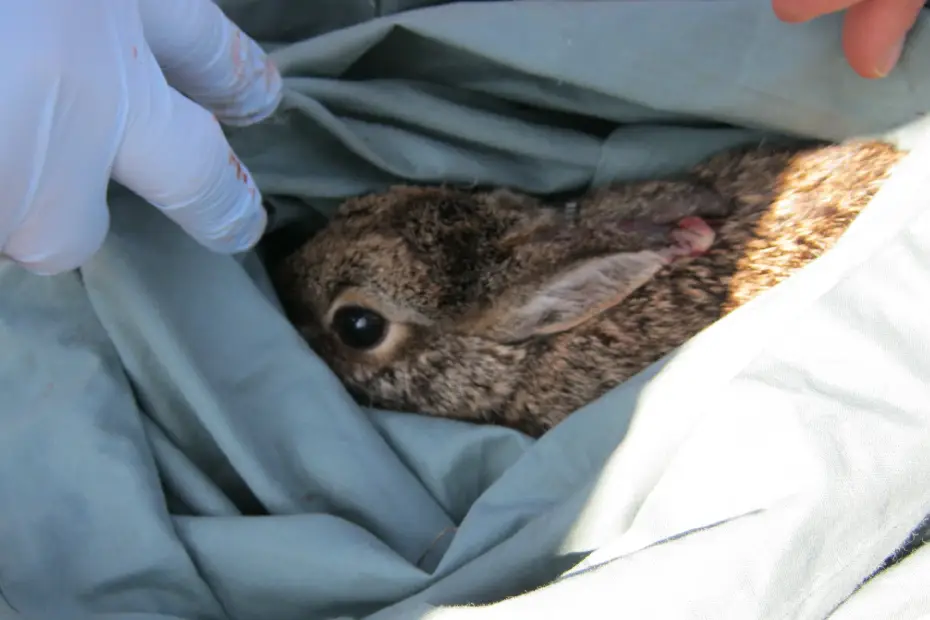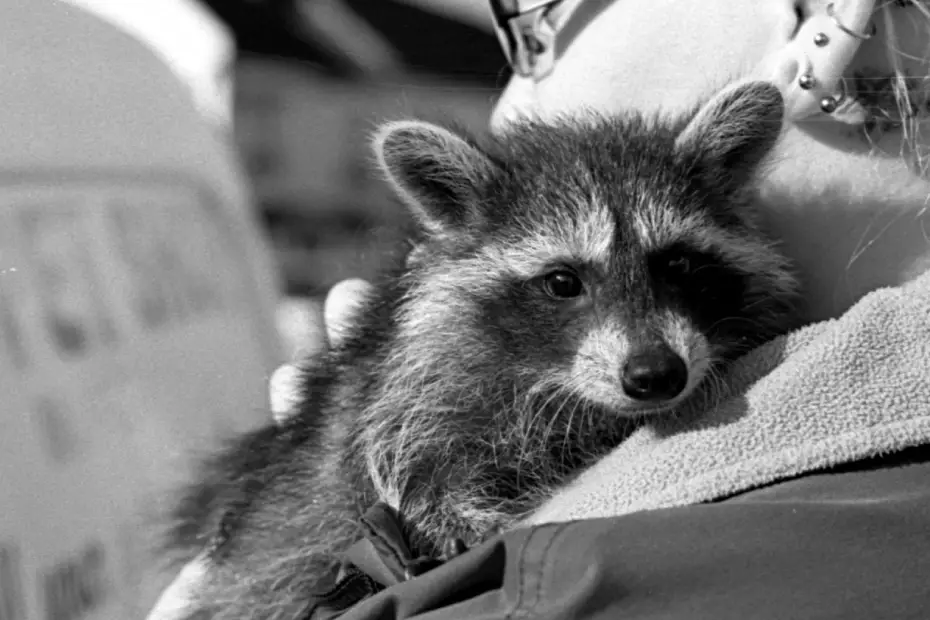Table of Contents
In the intricate tapestry of our planet’s ecosystems, every creature performs a critical function. The fragile balance of nature is upset when one of these animals is harmed or becomes ill. Fortunately, committed people and organizations put forth endless effort to save and heal wounded wildlife, providing them with a second opportunity at survival in the wild. We examine the remarkable tale of a hawk that was saved, its recovery from harm, and the significant influence of wildlife rehabilitation today.
The Hawk’s Plight: A Struggle for Survival
A majestic red-tailed hawk soars across the wide sky at the opening of the story. But when it struck a power wire, its flight was quickly cut short, and it suffered serious wing damage. The hawk was grounded as a result of the impact, unable to hunt or survive on its own. Its once formidable wings, now broken and bruised, were a harsh reminder of its weakness.
The situation of the injured hawk was terrible. It was vulnerable to hunger, predators, and the weather as it was unable to fly. Its odds of surviving were bleak. Luckily, the hawk was discovered by a concerned resident and reported to a wildlife rehabilitation clinic. Quickly responding, a group of skilled experts delicately caught the injured bird and brought it inside their facility for safety.
The Rescue and Initial Treatment: A Beacon of Hope
As soon as the hawk arrived at the rehabilitation facility, it was given medical attention. The veterinarians evaluated the severity of its wounds and gave it antibiotics and painkillers. Upon closer inspection, the hawk’s wing revealed a fractured humerus, or upper arm bone. The break was significant, needing surgical intervention to assure normal healing.
To stabilize the hawk’s condition, the rehabilitation team put up a lot of effort. They made sure it had access to food, water, and a peaceful place to rest and recover in addition to providing it with a secure and cozy habitat. A splint was used to immobilize the hawk’s wing, and it was constantly watched for any indications of infection or other problems.
Rehabilitation and Recovery: A Test of Resilience
The hawk had a difficult and protracted rehabilitation journey. It had a range of medical procedures and therapies intended to speed up its recovery and bring back its flying abilities. Physical therapy, hydrotherapy, and flying training were all used by the rehabilitation team to help the hawk’s muscles become stronger and its coordination better.
The hawk moved slowly but steadily forward. It began to regain some strength and movement with each day that went by. From the patient’s initial hesitant steps to their first successful flight inside the therapy enclosure, the rehabilitation team welcomed every little accomplishment. The hawk’s determination and resilience were extremely inspirational, acting as a monument to the power of the human-animal link.
The Release Back to the Wild: A Moment of Triumph
The hawk was set to be released back into the wild on this day after weeks of rigorous rehabilitation. Excitement and eagerness mixed together in the emotions of the rehabilitation team as they gathered. The hawk was carefully put in a carrier and taken to an appropriate release location once it had fully recovered and was ready to fly again.
The hawk paused as the carrier door opened, soaking in the well-known sights and sounds of its native environment. Then, regaining its independence, it leaped into the air with a forceful flap push. The hawk hovered overhead, its wings wide in a symbol of victory over misfortune, and the rehabilitation team watched in wonder.
The release of the hawk served as a moving reminder of the value of rehabilitating wildlife. It illustrated the strength of human kindness and the steadfastness of the natural world. After sustaining injuries and losing its ability to fly, the hawk rose above its difficulties to become a symbol of hope and resiliency.
The Impact of Wildlife Rehabilitation: A Ripple Effect
The hawk’s successful recovery and release is just one instance of the innumerable lives that wildlife rehabilitation facilities all around the world have saved. These groups are essential to protecting biodiversity and sustaining our ecosystems’ fragile balance. Giving injured and abandoned animals a second shot at life in the wild, they act as a lifeline for them.
The impact of wildlife rehabilitation projects goes well beyond the particular creatures they assist. We are safeguarding entire populations and maintaining the health and vibrancy of our natural world by rescuing and rehabilitating wildlife. In addition, we are encouraging a sense of interconnectedness and environmental responsibility, motivating the next generation to take care of and save the planet’s limited resources.
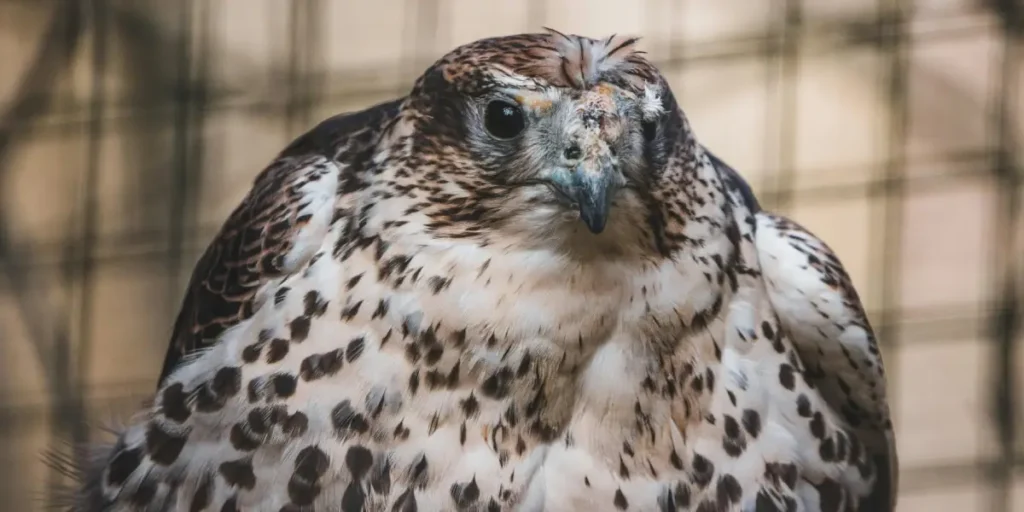
Conclusion: From Injury to Freedom, A Story of Hope
The remarkable comeback of the saved hawk is evidence of the strength of kindness, tenacity, and the unflinching spirit of the natural world. It serves as a reminder that hope persists despite all odds. Through the devotion of wildlife rehabilitators and the help of concerned citizens, we can make a difference in the lives of countless animals and secure a brighter future for our world.
Let us keep in mind the value of safeguarding our wildlife and lending our support to the arduous efforts of the groups that rescue and heal injured animals as we consider this incredible tale. Together, we can make a world free from harm and full of hope for a better tomorrow, where all species—great and small—may flourish in their native environments.
FAQs: Answering Your Questions About Wildlife Rehabilitation
What are the most common injuries that hawks sustain?
Hawks, like other birds of prey, can sustain a variety of injuries, including:
- Collisions: With buildings, power lines, vehicles, or other objects.
- Gunshot wounds: Unfortunately, some hawks are illegally shot or injured by hunters.
- Poisoning: From ingesting contaminated prey or pesticides.
- Electrocution: From perching on power lines or electrical equipment.
- Trapping: In traps set for other animals.
- Habitat loss: Leading to starvation or displacement.
How can I help injured wildlife in my area?
It is imperative that you promptly get in touch with a professional wildlife rehabilitator if you come across any injured wildlife. It could be harmful to you and the animal if you try to handle or care for the animal yourself. You can check online or get in touch with your local wildlife agency to obtain a list of certified rehabilitators in your region.
What are the chances of a rescued hawk successfully returning to the wild?
Depending on the type of hawk and the extent of their injuries, different rehabilitation and release rates apply. On the other hand, research indicates that the overall success rate of raptor rehabilitation is between 50 and 60 percent. This indicates that a majority of raptors accepted to rehabilitation facilities are effectively reintroduced into the wild.
How long does the rehabilitation process typically take for a hawk?
A hawk’s recuperation period may vary from a few weeks to many months, contingent upon the type of hawk and the extent of the injuries. While some hawks may only need rest and supportive treatment, others may need surgery or significant physical rehabilitation.
What are some of the challenges that wildlife rehabilitators face?
Wildlife rehabilitators face a number of challenges, including:
- Limited resources: To care for injured animals, many rehabilitation facilities run on a tight budget and depend on contributions and volunteers.
- Emotional toll: It can be emotionally taxing to work with injured and orphaned animals because rehabilitators frequently see pain and loss.
- Public misconceptions: Wildlife rehabilitation is important, yet some people might not see it or think it interferes with the natural world.
Wildlife rehabilitates are committed to their goal of aiding wounded and abandoned animals in spite of these obstacles. Their efforts are crucial to protecting biodiversity and keeping our ecosystems healthy.
Additional Questions and Topics: Delving Deeper into the World of Wildlife Rehabilitation
Can you provide more details about the specific species of hawk that was rescued?
The hawk that was saved in our tale was a red-tailed hawk, or Buteo jamaicensis. This particular species of hawk is among the most prevalent and extensive in North America. They are distinguished by their characteristic reddish-brown tail feathers and their outstanding hunting abilities. Because of their adaptability, red-tailed hawks can be found in a range of environments, such as urban areas, grasslands, and woodlands.
What were some of the unique challenges faced in rehabilitating this particular hawk?
The rehabilitation of this particular hawk presented several challenges:
- Wing Fracture:The surgical treatment of the hawk’s fractured humerus entailed precisely aligning the shattered bone and fixing it with pins or plates. Specialized veterinary knowledge and cautious post-operative care were needed for this sensitive treatment.
- Flight Training: The process of restoring a bird of prey’s ability to fly is difficult. In order to guarantee that the repaired wing is strong enough to withstand prolonged flight in the wild, it entails gradually increasing the hawk’s activity and flight time in a controlled setting.
- Behavioral Conditioning: The hawk required not only physical recovery but also regaining its innate hunting instincts and ecological awareness. This entailed giving the hawk chances to practice capturing live prey and seeing other hawks in the air.
Are there any ongoing efforts to monitor the hawk’s progress in the wild?
Before being released, rehabilitated hawks may occasionally wear bands or tracking devices. This enables scientists to track their travels and evaluate how well they have adapted to living in the wild. All rehabilitation facilities do not, however, have the funding necessary to put these monitoring procedures into place.
How can individuals contribute to the conservation of hawks and other birds of prey?
There are several ways individuals can contribute to the conservation of hawks and other birds of prey:
- Support wildlife rehabilitation centers: Give to or volunteer at the wildlife rehabilitation facility in your community.
- Protect habitat: Encourage the preservation of grasslands, woodlands, and other natural areas that are important to wildlife, including hawks.
- Reduce threats: Reducing the amount of pesticides and other chemicals used around hawks and their prey is important.
- Educate others: Raise awareness of the value of protecting hawks and the efforts made by wildlife rehabilitators.
- Be a responsible pet owner: To stop dogs and cats from bothering or hurting wildlife, keep them on leashes and keep cats inside.
What are some other inspiring stories of rescued wildlife?
There are countless heartwarming tales of wildlife that has been saved, all of which highlight the tenacity of creatures and the commitment of those who provide for them. These tales, which include marine turtles saved from fishing nets and abandoned young elephants nursed back to health, serve as a constant reminder of the interdependence of all life and the value of preserving the biodiversity of our planet.
We can make sure that future generations continue to be astounded by the natural world’s wonders and feel the excitement of seeing a rescued hawk soar to freedom by telling these stories and contributing to animal conservation initiatives.
The Unsung Heroes: Wildlife Rehabilitators
Every successful tale of wildlife rescue and rehabilitation has a group of committed people at its core who give their time, effort, and knowledge to aiding hurt and abandoned creatures. The unsung heroes of conservation are wildlife rehabilitators, who put in endless hours to heal injured wings, tend to the needs of abandoned newborns, and give a safe sanctuary to creatures in distress.
These people, who are passionate about animals and deeply committed to environmental preservation, come from many areas of life. Their skill set is distinct, encompassing knowledge of veterinary medicine, proficiency with animal care, and an in-depth comprehension of the natural environment. Their work frequently involves long hours, difficult decisions, and the ability to deal with the loss of creatures that cannot be saved. It is also emotionally and physically taxing.
In addition to providing care, wildlife rehabilitators often serve as activists and educators. They strive to increase public understanding of the need of protecting wildlife and the dangers that many species face. Additionally, they instruct the public on how to live in harmony with wildlife and steer clear of activities that could endanger lives or cause displacement.
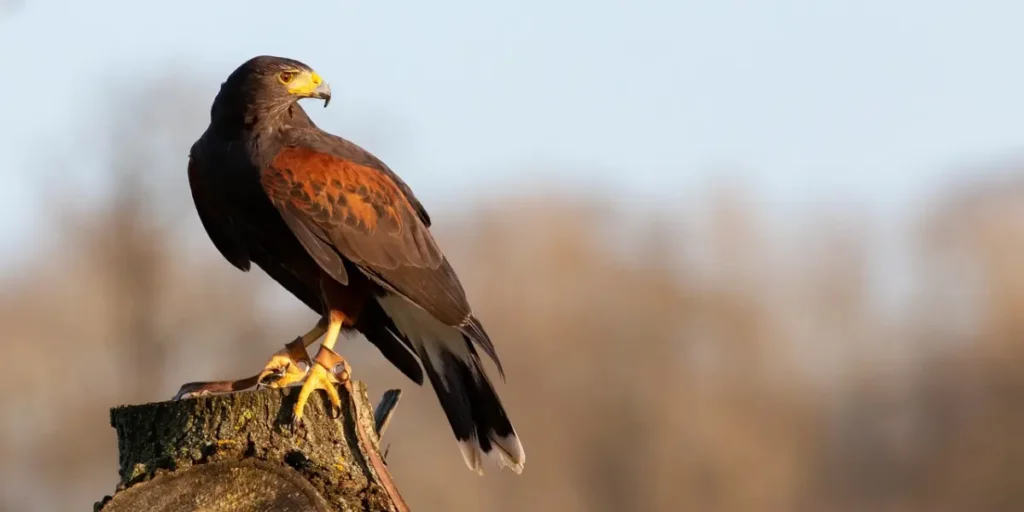
The Role of Technology in Wildlife Rehabilitation
As the human imprint on the earth continues to spread, the need for wildlife rehabilitation is only projected to grow. Worldwide pressure on wildlife populations is rising due to factors such as habitat loss, climate change, and other human-caused hazards.
But there’s cause for optimism. The future of wildlife conservation is bright thanks to the commitment of animal rehabilitates, technological improvements, and rising public awareness. We can guarantee that tales like the rescued hawk’s journey from damage to freedom will continue to inspire and motivate us for many years to come by supporting these initiatives and making deliberate decisions to safeguard our natural environment.
The Future of Wildlife Rehabilitation
The need for animal rehabilitation is only anticipated to increase as the human footprint on Earth grows. Worldwide pressure on wildlife populations is rising due to factors such as habitat loss, climate change, and other human-caused hazards.
But there’s cause for optimism. The future of wildlife conservation is bright thanks to the commitment of animal rehabilitators, technological improvements, and rising public awareness. We can guarantee that tales like the rescued hawk’s journey from damage to freedom will continue to inspire and motivate us for many years to come by supporting these initiatives and making deliberate decisions to safeguard our natural environment.
A Call to Action: Be a Part of the Solution
The inspirational hawk’s recovery serves as a potent reminder that every person has the capacity to positively impact the lives of untamed animals. There are numerous methods to improve the welfare of our planet’s priceless wildlife, whether it’s by giving to a nearby wildlife rehabilitation facility, lessening your environmental effect, or just raising awareness of the value of conservation.
Recall that the decisions we make now will determine how our natural world develops in the future. Together, let’s make an effort to protect the environment and build a future where all living things, no matter how big or small, may coexist peacefully.
Beyond Hawks: The Diversity of Wildlife Rehabilitation
Even though the tale of the saved hawk serves as a potent illustration of the value of wildlife rehabilitation, it’s crucial to keep in mind that these initiatives involve far more than just raptors. Animals ranging in size from small songbirds to large beasts are cared for by wildlife rehabilitation facilities located all over the world.
Every species has different needs and need specific care. Each animal’s unique needs, such as those related to nutrition, habitat, and social behavior, must be understood by rehabilitators. Additionally, they must have the flexibility to modify their treatment strategies to meet the unique requirements of every patient.
Among the animals that are rehabilitated most frequently are:
- Mammals: Squirrels, raccoons, opossums, deer, foxes, and even bears.
- Birds: Songbirds, waterfowl, owls, hawks, eagles, and other raptors.
- Reptiles: Turtles, snakes, lizards, and alligators.
- Amphibians: Frogs, toads, and salamanders.
Each of these animals has a different rehabilitation process based on its age, species, and type of injuries. Nonetheless, the fundamental objective is the same: giving the animal the attention it requires in order to heal and return to its normal environment.
The Global Network of Wildlife Rehabilitation
Global efforts are being made in the field of wildlife rehabilitation, with committed people and organizations working nonstop to save and maintain species. These efforts are generally coordinated through worldwide networks and partnerships, allowing rehabilitators to share expertise, resources, and best practices.
Wildlife rehabilitators can receive training and certification from organizations such as the International Wildlife Rehabilitation Council (IWRC), which guarantees that they possess the expertise and knowledge required to treat injured animals with the best care possible. Additionally, the IWRC supports advocacy and research projects that try to increase the efficacy of wildlife rehabilitation programs all throughout the world.
The Power of Education and Outreach
Wildlife rehabilitation facilities not only directly treat injured animals but also serve as important public education resources on wildlife conservation. Many centers offer educational programs and tours, letting visitors to learn about the animals they care for and the issues they face in the wild.
In order to promote a feeling of interconnectedness and accountability towards the natural environment, these outreach initiatives are crucial. We can ensure a more sustainable future for all living things by teaching the public about the value of wildlife protection and their part in preserving it.
A Shared Responsibility: Protecting Our Planet’s Wildlife
The remarkable comeback of the saved hawk serves as a potent reminder that each of us must do our part to preserve the wildlife on our planet. We can all help create a healthier and more vibrant earth by supporting wildlife rehabilitation initiatives, adopting sustainable lifestyle choices, or just taking in the beauty and diversity of nature.
Let’s all accept that it is our collective duty to save and maintain the amazing animals that inhabit our planet. By banding together, we can make sure that hawks, which are a symbol of hope and resiliency in a world in dire need of both, will always be majestic and inspire surprise and awe in the eyes of future generations.
The Economic and Ecological Benefits of Wildlife Rehabilitation
The welfare of individual animals is the main goal of wildlife rehabilitation, but there are also important ecological and economic advantages to these initiatives. Wildlife rehabilitation aids in the preservation of robust and balanced ecosystems by returning wounded and orphaned animals to their native environments.
Many vital functions are offered by robust ecosystems, such as:
- Pollination: Animals like bees, butterflies, and birds are essential to the pollination of many plants. Without these pollinators, many crops and wild plants would fail to reproduce, leading to food shortages and ecological upheaval.
- Seed dispersal: Animals play an important role in seed distribution, helping plants to spread and colonize new areas. The regrowth of forests and other natural ecosystems, as well as the preservation of plant diversity, depend on this process.
- Pest control: Numerous creatures, including owls, hawks, and bats, aid in the management of rodent and insect populations that pose a threat to crops and the spread of disease. Pest populations might skyrocket in the absence of these natural predators, posing a risk to public health and causing financial losses.
- Nutrient cycling: Because they break down organic matter and replenish the soil with critical nutrients, animals are essential to the cycle of nutrients. Maintaining soil fertility and promoting plant growth depend on this mechanism.
We contribute to the preservation of these vital ecosystem services, which in turn benefit civilization greatly both ecologically and economically, by healing and releasing injured wildlife.
The Role of Research and Innovation in Wildlife Rehabilitation
In the subject of wildlife rehabilitation, new methods and tools are developed on a regular basis. To guarantee that animals receive the finest care possible and to increase the efficacy of rehabilitation efforts, research and innovation are essential.
Some of the important topics of research in wildlife rehabilitation include:
- Injury assessment and treatment: creating fresh and enhanced techniques for identifying and managing injuries in wildlife.
- Pain management: identifying efficient methods for treating injured animals’ pain while avoiding the usage of medications that can have unfavorable side effects.
- Rehabilitation techniques: investigating cutting-edge methods for rehabilitation, such as simulating natural settings using virtual reality and other technologies.
- Post-release monitoring: creating more effective methods for tracking and keeping an eye on the recovery of animals that have been released back into the wild.
We can keep raising the success rates of wildlife rehabilitation and guaranteeing that more animals have an opportunity to return to their native habitats by making investments in research and innovation.
Conclusion: A Shared Vision for a Thriving Planet
The heartwarming tale of the saved hawk is proof of both the resiliency of the natural world and the efficacy of human kindness. It serves as a reminder that hope persists despite all odds. Together, we can safeguard and rehabilitate animals to improve the future for all living things.
Let’s all accept that we have a common obligation to protect our planet and its inhabitants. We can leave a world where wildlife flourishes and ecosystems survive for future generations by supporting animal rehabilitation programs, adopting sustainable lifestyle choices, and pushing for environmental policies.
Let’s work together to leave a compassionate and responsible legacy so that future generations will be encouraged and inspired by the heartwarming tales of rescued animals, like the hawk who flew back to freedom.
